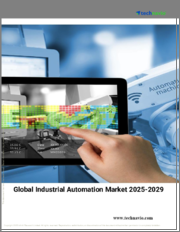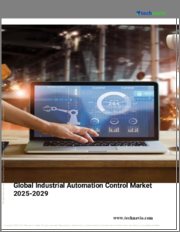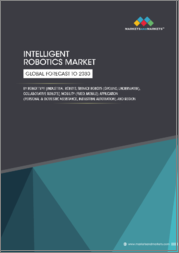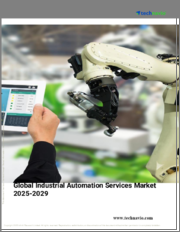
|
시장보고서
상품코드
1592806
세계의 산업 자동화 디바이스 매니저 소프트웨어 시장 : 유형별, 용도별 예측(2025-2030년)Industrial Automation Device Manager Software Market by Type (Cloud Level, Factory Level, Field Level), Utility (Automotive, Chemical & Petrochemical, Oil & Gas) - Global Forecast 2025-2030 |
||||||
산업 자동화 디바이스 매니저 소프트웨어 시장은 2023년 14억 3,000만 달러로 평가되었고, 2024년에는 15억 6,000만 달러에 이를 것으로 예측되며, CAGR 9.18%로 성장해 2030년에는 26억 6,000만 달러에 도달할 것으로 예상됩니다.
산업 자동화 디바이스 매니저 소프트웨어는 운영 효율성, 생산성 최적화, 다양한 산업 자동화 시스템의 원활한 통합을 실현하는 데 매우 중요합니다. 제조, 에너지, 자동차 등 업계 전반에 걸친 예지보전의 촉진을 포함합니다. 이러한 소프트웨어의 필요성은 산업 시스템의 복잡성, 가동 중단 시간 단축, 자산 관리 개선 등의 요구로 인해 발생합니다. 다양한 분야에서 린 생산 방식과 식스 시그마 기술을 중시하는 분야에서는 매우 귀중한 존재가됩니다. 최종 용도로는 석유, 가스, 식품, 의약품 등 정확성과 효율성이 가장 중요시되는 산업이 포함됩니다. AI 기술의 급속한 진보, 인더스트리 4.0 구상에 대한 투자 증가 등을 들 수 있습니다. 예지보전 기능의 개발에는 지속가능성 동향과 규제 준수에 대응하는 새로운 기회가 존재합니다. 에 주력해야 합니다. 그러나 초기 도입 비용의 높이, 사이버 보안 위협, 고급 소프트웨어를 다루는 기술의 부족 등의 과제도 있습니다.이러한 과제에는 견고한 사이버 보안 대책과 종합적인 교육 프로그램이 필요합니다. 인터페이스 개발, 다양한 플랫폼 간 상호 운용성 확대, 실용적인 통찰력을 창출하기 위한 분석 능력 강화에 우선적으로 대응 기술 파트너와의 끊임없는 협업도 경쟁 우위를 키울 수 있습니다. 따라서 이 분야에서 한 걸음 더 나아가려면 혁신에 대한 적극적인 접근, 전략적 파트너십, 지속가능성 및 사용자 참여에 대한 강한 헌신이 필요합니다.
| 주요 시장 통계 | |
|---|---|
| 기준년(2023) | 14억 3,000만 달러 |
| 예측년(2024) | 15억 6,000만 달러 |
| 예측년(2030) | 26억 6,000만 달러 |
| CAGR(%) | 9.18% |
시장 역학: 빠르게 진화하는 산업 자동화 디바이스 매니저 소프트웨어 시장의 주요 시장 인사이트 공개
산업 자동화 디바이스 매니저 소프트웨어 시장은 수요 및 공급의 역동적인 상호 작용에 의해 변모를 이루고 있습니다. 결정, 새로운 비즈니스 기회 획득 할 수 있습니다. 이러한 동향을 종합적으로 파악함으로써 기업은 정치적, 지리적, 기술적, 사회적, 경제적 영역에 걸친 다양한 위험을 줄일 수 있으며 소비자 행동과 그것이 제조 비용과 구매 동향에 미치는 영향을 더 명확하게 이해할 수 있습니다.
- 시장 성장 촉진요인
- 제조업으로부터의 자동화 기기 관리에 대한 수요 증가
- 세계에서 높아지는 산업화와 디지털화
- 근로자의 안전기준과 환경 컴플라이언스에 관한 세계 각국의 정부에 의한 엄격한 규제
- 시장 성장 억제요인
- 숙련 노동자의 부족과 함께, 자동화 솔루션의 도입에는 고액의 초기 투자가 필요
- 시장 기회
- 다양한 섹터에서 인더스트리 4.0의 도입이 증가
- 신기술의 도입과 고도의 자동화 디바이스의 인트로덕션
- 시장의 과제
- 클라우드 기반 서비스 이용 증가에 따른 데이터 보안 우려
Porter's Five Forces: 산업 자동화 디바이스 매니저 소프트웨어 시장을 탐색하는 전략 도구
Portre's Five Forces 프레임워크는 시장 상황경쟁 구도를 파악하기 위한 중요한 도구입니다. 이 기술을 제공합니다. 기업이 시장 내 세력도를 평가하고 신규 사업의 수익성을 판단하는 데 도움이 됩니다. 당신은 더 강인한 시장에서 포지셔닝을 보장할 수 있습니다.
PESTLE 분석 : 산업 자동화 디바이스 매니저 소프트웨어 시장의 외부 영향을 파악
외부 거시 환경 요인은 산업 자동화 디바이스 매니저 소프트웨어 시장의 성과 역학을 형성하는 데 매우 중요한 역할을합니다. 이러한 영향을 탐색하기 위해 필요한 정보를 제공합니다. PESTLE 요인을 조사함으로써 기업은 잠재적인 위험과 기회를 더 잘 이해할 수 있습니다. 변화를 예측하고 앞을 내다보고 있는 적극적인 의사결정을 할 준비가 됩니다.
시장 점유율 분석 : 산업 자동화 디바이스 매니저 소프트웨어 시장에서 경쟁 구도 파악
산업 자동화 디바이스 매니저 소프트웨어 시장의 상세한 시장 점유율 분석을 통해 공급업체의 성과를 종합적으로 평가할 수 있습니다. 포 지셔닝을 밝힐 수 있습니다.이 분석을 통해 시장 집중, 단편화 및 통합 동향을 밝혀내고 공급업체는 경쟁이 치열 해짐에 따라 자사의 지위를 높이는 전략적 의사 결정을 내릴 수 있습니다. 필요한 지식을 얻을 수 있습니다.
FPNV 포지셔닝 매트릭스 : 산업 자동화 디바이스 매니저 소프트웨어 시장에서 공급업체의 성능 평가
FPNV 포지셔닝 매트릭스는 산업 자동화 디바이스 매니저 소프트웨어 시장에서 벤더를 평가하는 중요한 도구입니다. 정보를 기반으로 의사 결정을 내릴 수 있습니다. 네 가지 사분면을 통해 벤더를 명확하고 정확하게 분할하고 전략 목표에 가장 적합한 파트너 및 솔루션을 파악할 수 있습니다.
전략 분석 및 권장 : 산업 자동화 디바이스 매니저 소프트웨어 시장의 성공에 대한 길을 그리기
산업 자동화 디바이스 매니저 소프트웨어 시장의 전략 분석은 세계 시장에서의 프레즌스 강화를 목표로 하는 기업에 필수적인 요소입니다. 이 방법을 사용하면 경쟁 구도에서 어려움을 극복하고 새로운 비즈니스 기회를 활용하여 장기적인 성공을 거둘 수 있습니다.
이 보고서는 주요 관심 분야를 포괄하는 시장의 종합적인 분석을 제공합니다.
1. 시장 침투: 현재 시장 환경의 상세한 검토, 주요 기업의 광범위한 데이터, 시장 도달범위 및 전반적인 영향력 평가.
2. 시장 개척도: 신흥 시장의 성장 기회를 파악하고 기존 분야의 확장 가능성을 평가하며 미래 성장을 위한 전략적 로드맵을 제공합니다.
3. 시장 다양화: 최근 제품 출시, 미개척 지역, 업계의 주요 진보, 시장을 형성하는 전략적 투자를 분석합니다.
4. 경쟁 평가 및 정보 : 경쟁 구도를 철저히 분석하여 시장 점유율, 사업 전략, 제품 포트폴리오, 인증, 규제 당국 승인, 특허 동향, 주요 기업의 기술 진보 등을 검증합니다.
5. 제품 개발 및 혁신 : 미래 시장 성장을 가속할 것으로 예상되는 최첨단 기술, R&D 활동, 제품 혁신을 강조합니다.
또한 이해관계자가 충분한 정보를 얻고 의사결정을 할 수 있도록 중요한 질문에 대답하고 있습니다.
1. 현재 시장 규모와 향후 성장 예측은?
2. 최고의 투자 기회를 제공하는 제품, 부문 및 지역은 어디입니까?
3. 시장을 형성하는 주요 기술 동향과 규제의 영향은?
4. 주요 벤더의 시장 점유율과 경쟁 포지션은?
5. 벤더 시장 진입·철수 전략의 원동력이 되는 수익원과 전략적 기회는 무엇인가?
목차
제1장 서문
제2장 조사 방법
제3장 주요 요약
제4장 시장 개요
제5장 시장 인사이트
- 시장 역학
- 성장 촉진요인
- 제조업에 있어서의 자동화 기기 관리 수요 증가
- 세계에서 산업화와 디지털화가 진행된다
- 근로자의 안전기준과 환경 컴플라이언스에 관해서, 세계 정부가 엄격한 규제를 시행하고 있다
- 억제요인
- 자동화 솔루션의 도입에는 고액의 초기 투자가 필요하고, 숙련된 노동력도 부족합니다.
- 기회
- 다양한 분야에서 인더스트리 4.0의 도입이 증가
- 신기술의 도입과 고도의 자동화 기기의 인트로덕션
- 과제
- 클라우드 기반 서비스 이용 증가에 따른 데이터 보안 우려
- 성장 촉진요인
- 시장 세분화 분석
- Porter's Five Forces 분석
- PESTEL 분석
- 정치적
- 경제
- 사교
- 기술적
- 법률상
- 환경
제6장 산업 자동화 디바이스 매니저 소프트웨어 시장 : 유형별
- 클라우드 레벨
- 공장 레벨
- 필드 레벨
제7장 산업 자동화 디바이스 매니저 소프트웨어 시장 : 유틸리티별
- 자동차
- 화학제품 및 석유화학제품
- 석유 및 가스
- 전력
제8장 아메리카 산업 자동화 디바이스 매니저 소프트웨어 시장
- 아르헨티나
- 브라질
- 캐나다
- 멕시코
- 미국
제9장 아시아태평양의 산업 자동화 디바이스 매니저 소프트웨어 시장
- 호주
- 중국
- 인도
- 인도네시아
- 일본
- 말레이시아
- 필리핀
- 싱가포르
- 한국
- 대만
- 태국
- 베트남
제10장 유럽·중동 및 아프리카의 산업 자동화 디바이스 매니저 소프트웨어 시장
- 덴마크
- 이집트
- 핀란드
- 프랑스
- 독일
- 이스라엘
- 이탈리아
- 네덜란드
- 나이지리아
- 노르웨이
- 폴란드
- 카타르
- 러시아
- 사우디아라비아
- 남아프리카
- 스페인
- 스웨덴
- 스위스
- 터키
- 아랍에미리트(UAE)
- 영국
제11장 경쟁 구도
- 시장 점유율 분석 2023
- FPNV 포지셔닝 매트릭스, 2023
- 경쟁 시나리오 분석
- 전략 분석과 제안
기업 목록
- ABB Ltd.
- Amazon Web Services, Inc.
- Axiomtek Group
- Azbil Corporation
- B&R Industrial Automation GmbH
- Cisco Systems, Inc.
- Delta Electronics, Inc.
- Eaton Corporation PLC
- Emerson Electric Co.
- Empowered Automation Solutions
- General Electric Company
- Hexagon AB
- Honeywell International Inc.
- Inductive Automation, LLC
- Intel Corporation
- Robustel
- Rockwell Automation Inc.
- Schneider Electric SE
- SeQent
- Siemens AG
- TBA Group
- Tuxera Inc.
- UpKeep Technologies, Inc.
- Yokogawa Electric Corporation
The Industrial Automation Device Manager Software Market was valued at USD 1.43 billion in 2023, expected to reach USD 1.56 billion in 2024, and is projected to grow at a CAGR of 9.18%, to USD 2.66 billion by 2030.
Industrial Automation Device Manager Software is pivotal in streamlining operations, optimizing productivity, and ensuring seamless integration of various industrial automation systems. Its scope includes enhancing configuration management, monitoring device performance, and facilitating predictive maintenance across industries like manufacturing, energy, and automotive. The necessity for such software arises from the increasing complexity of industrial systems, the need for reducing operational downtimes, and improving asset management. Applications are extensive, encompassing real-time data acquisition, system diagnostics, and remote access to devices, making it invaluable for sectors focusing on lean manufacturing and Six Sigma methodologies. The end-use includes industries such as oil & gas, food & beverage, and pharmaceuticals, where precision and efficiency are paramount. Key growth factors include the surge in demand for smart manufacturing solutions, the rapid advancement of IoT and AI technologies, and increasing investments in industry 4.0 initiatives. Emerging opportunities exist in developing eco-friendly automation solutions and AI-driven predictive maintenance features, catering to sustainability trends and regulatory compliance. To capitalize, businesses should focus on integrating cloud-based solutions that promise flexibility and scalability. Limitations include high initial deployment costs, cybersecurity threats, and a significant skills gap in handling sophisticated software. These challenges necessitate robust cybersecurity measures and comprehensive training programs. Moreover, intense market competition compels differentiation through unique value propositions and customer-centric innovations. Innovation and research should prioritize developing user-friendly interfaces, expanding interoperability across diverse platforms, and enhancing analytics capabilities to generate actionable insights. Constant collaboration with technology partners can also foster competitive advantage. The market is dynamic, characterized by technological advancements and changing consumer preferences, requiring businesses to remain agile and responsive to evolving demands. Thus, staying ahead in this arena involves a proactive approach toward innovation, strategic partnerships, and a keen focus on sustainability and user engagement.
| KEY MARKET STATISTICS | |
|---|---|
| Base Year [2023] | USD 1.43 billion |
| Estimated Year [2024] | USD 1.56 billion |
| Forecast Year [2030] | USD 2.66 billion |
| CAGR (%) | 9.18% |
Market Dynamics: Unveiling Key Market Insights in the Rapidly Evolving Industrial Automation Device Manager Software Market
The Industrial Automation Device Manager Software Market is undergoing transformative changes driven by a dynamic interplay of supply and demand factors. Understanding these evolving market dynamics prepares business organizations to make informed investment decisions, refine strategic decisions, and seize new opportunities. By gaining a comprehensive view of these trends, business organizations can mitigate various risks across political, geographic, technical, social, and economic domains while also gaining a clearer understanding of consumer behavior and its impact on manufacturing costs and purchasing trends.
- Market Drivers
- Growing demand for automation device management from the manufacturing industries
- Rising industrialization and digitalization across the globe
- Strict regulations enforced by governments worldwide for worker safety standards and environmental compliance
- Market Restraints
- High initial investments are required for implementing automation solutions coupled with lack of skilled workforce
- Market Opportunities
- Increasing adoption of Industry 4.0 practices across various sectors
- Deployment of new technologies and introduction of advanced automation devices
- Market Challenges
- Data security concerns associated with the increasing use of cloud-based services
Porter's Five Forces: A Strategic Tool for Navigating the Industrial Automation Device Manager Software Market
Porter's five forces framework is a critical tool for understanding the competitive landscape of the Industrial Automation Device Manager Software Market. It offers business organizations with a clear methodology for evaluating their competitive positioning and exploring strategic opportunities. This framework helps businesses assess the power dynamics within the market and determine the profitability of new ventures. With these insights, business organizations can leverage their strengths, address weaknesses, and avoid potential challenges, ensuring a more resilient market positioning.
PESTLE Analysis: Navigating External Influences in the Industrial Automation Device Manager Software Market
External macro-environmental factors play a pivotal role in shaping the performance dynamics of the Industrial Automation Device Manager Software Market. Political, Economic, Social, Technological, Legal, and Environmental factors analysis provides the necessary information to navigate these influences. By examining PESTLE factors, businesses can better understand potential risks and opportunities. This analysis enables business organizations to anticipate changes in regulations, consumer preferences, and economic trends, ensuring they are prepared to make proactive, forward-thinking decisions.
Market Share Analysis: Understanding the Competitive Landscape in the Industrial Automation Device Manager Software Market
A detailed market share analysis in the Industrial Automation Device Manager Software Market provides a comprehensive assessment of vendors' performance. Companies can identify their competitive positioning by comparing key metrics, including revenue, customer base, and growth rates. This analysis highlights market concentration, fragmentation, and trends in consolidation, offering vendors the insights required to make strategic decisions that enhance their position in an increasingly competitive landscape.
FPNV Positioning Matrix: Evaluating Vendors' Performance in the Industrial Automation Device Manager Software Market
The Forefront, Pathfinder, Niche, Vital (FPNV) Positioning Matrix is a critical tool for evaluating vendors within the Industrial Automation Device Manager Software Market. This matrix enables business organizations to make well-informed decisions that align with their goals by assessing vendors based on their business strategy and product satisfaction. The four quadrants provide a clear and precise segmentation of vendors, helping users identify the right partners and solutions that best fit their strategic objectives.
Strategy Analysis & Recommendation: Charting a Path to Success in the Industrial Automation Device Manager Software Market
A strategic analysis of the Industrial Automation Device Manager Software Market is essential for businesses looking to strengthen their global market presence. By reviewing key resources, capabilities, and performance indicators, business organizations can identify growth opportunities and work toward improvement. This approach helps businesses navigate challenges in the competitive landscape and ensures they are well-positioned to capitalize on newer opportunities and drive long-term success.
Key Company Profiles
The report delves into recent significant developments in the Industrial Automation Device Manager Software Market, highlighting leading vendors and their innovative profiles. These include ABB Ltd., Amazon Web Services, Inc., Axiomtek Group, Azbil Corporation, B&R Industrial Automation GmbH, Cisco Systems, Inc., Delta Electronics, Inc., Eaton Corporation PLC, Emerson Electric Co., Empowered Automation Solutions, General Electric Company, Hexagon AB, Honeywell International Inc., Inductive Automation, LLC, Intel Corporation, Robustel, Rockwell Automation Inc., Schneider Electric SE, SeQent, Siemens AG, TBA Group, Tuxera Inc., UpKeep Technologies, Inc., and Yokogawa Electric Corporation.
Market Segmentation & Coverage
This research report categorizes the Industrial Automation Device Manager Software Market to forecast the revenues and analyze trends in each of the following sub-markets:
- Based on Type, market is studied across Cloud Level, Factory Level, and Field Level.
- Based on Utility, market is studied across Automotive, Chemical & Petrochemical, Oil & Gas, and Power.
- Based on Region, market is studied across Americas, Asia-Pacific, and Europe, Middle East & Africa. The Americas is further studied across Argentina, Brazil, Canada, Mexico, and United States. The United States is further studied across California, Florida, Illinois, New York, Ohio, Pennsylvania, and Texas. The Asia-Pacific is further studied across Australia, China, India, Indonesia, Japan, Malaysia, Philippines, Singapore, South Korea, Taiwan, Thailand, and Vietnam. The Europe, Middle East & Africa is further studied across Denmark, Egypt, Finland, France, Germany, Israel, Italy, Netherlands, Nigeria, Norway, Poland, Qatar, Russia, Saudi Arabia, South Africa, Spain, Sweden, Switzerland, Turkey, United Arab Emirates, and United Kingdom.
The report offers a comprehensive analysis of the market, covering key focus areas:
1. Market Penetration: A detailed review of the current market environment, including extensive data from top industry players, evaluating their market reach and overall influence.
2. Market Development: Identifies growth opportunities in emerging markets and assesses expansion potential in established sectors, providing a strategic roadmap for future growth.
3. Market Diversification: Analyzes recent product launches, untapped geographic regions, major industry advancements, and strategic investments reshaping the market.
4. Competitive Assessment & Intelligence: Provides a thorough analysis of the competitive landscape, examining market share, business strategies, product portfolios, certifications, regulatory approvals, patent trends, and technological advancements of key players.
5. Product Development & Innovation: Highlights cutting-edge technologies, R&D activities, and product innovations expected to drive future market growth.
The report also answers critical questions to aid stakeholders in making informed decisions:
1. What is the current market size, and what is the forecasted growth?
2. Which products, segments, and regions offer the best investment opportunities?
3. What are the key technology trends and regulatory influences shaping the market?
4. How do leading vendors rank in terms of market share and competitive positioning?
5. What revenue sources and strategic opportunities drive vendors' market entry or exit strategies?
Table of Contents
1. Preface
- 1.1. Objectives of the Study
- 1.2. Market Segmentation & Coverage
- 1.3. Years Considered for the Study
- 1.4. Currency & Pricing
- 1.5. Language
- 1.6. Stakeholders
2. Research Methodology
- 2.1. Define: Research Objective
- 2.2. Determine: Research Design
- 2.3. Prepare: Research Instrument
- 2.4. Collect: Data Source
- 2.5. Analyze: Data Interpretation
- 2.6. Formulate: Data Verification
- 2.7. Publish: Research Report
- 2.8. Repeat: Report Update
3. Executive Summary
4. Market Overview
5. Market Insights
- 5.1. Market Dynamics
- 5.1.1. Drivers
- 5.1.1.1. Growing demand for automation device management from the manufacturing industries
- 5.1.1.2. Rising industrialization and digitalization across the globe
- 5.1.1.3. Strict regulations enforced by governments worldwide for worker safety standards and environmental compliance
- 5.1.2. Restraints
- 5.1.2.1. High initial investments are required for implementing automation solutions coupled with lack of skilled workforce
- 5.1.3. Opportunities
- 5.1.3.1. Increasing adoption of Industry 4.0 practices across various sectors
- 5.1.3.2. Deployment of new technologies and introduction of advanced automation devices
- 5.1.4. Challenges
- 5.1.4.1. Data security concerns associated with the increasing use of cloud-based services
- 5.1.1. Drivers
- 5.2. Market Segmentation Analysis
- 5.3. Porter's Five Forces Analysis
- 5.3.1. Threat of New Entrants
- 5.3.2. Threat of Substitutes
- 5.3.3. Bargaining Power of Customers
- 5.3.4. Bargaining Power of Suppliers
- 5.3.5. Industry Rivalry
- 5.4. PESTLE Analysis
- 5.4.1. Political
- 5.4.2. Economic
- 5.4.3. Social
- 5.4.4. Technological
- 5.4.5. Legal
- 5.4.6. Environmental
6. Industrial Automation Device Manager Software Market, by Type
- 6.1. Introduction
- 6.2. Cloud Level
- 6.3. Factory Level
- 6.4. Field Level
7. Industrial Automation Device Manager Software Market, by Utility
- 7.1. Introduction
- 7.2. Automotive
- 7.3. Chemical & Petrochemical
- 7.4. Oil & Gas
- 7.5. Power
8. Americas Industrial Automation Device Manager Software Market
- 8.1. Introduction
- 8.2. Argentina
- 8.3. Brazil
- 8.4. Canada
- 8.5. Mexico
- 8.6. United States
9. Asia-Pacific Industrial Automation Device Manager Software Market
- 9.1. Introduction
- 9.2. Australia
- 9.3. China
- 9.4. India
- 9.5. Indonesia
- 9.6. Japan
- 9.7. Malaysia
- 9.8. Philippines
- 9.9. Singapore
- 9.10. South Korea
- 9.11. Taiwan
- 9.12. Thailand
- 9.13. Vietnam
10. Europe, Middle East & Africa Industrial Automation Device Manager Software Market
- 10.1. Introduction
- 10.2. Denmark
- 10.3. Egypt
- 10.4. Finland
- 10.5. France
- 10.6. Germany
- 10.7. Israel
- 10.8. Italy
- 10.9. Netherlands
- 10.10. Nigeria
- 10.11. Norway
- 10.12. Poland
- 10.13. Qatar
- 10.14. Russia
- 10.15. Saudi Arabia
- 10.16. South Africa
- 10.17. Spain
- 10.18. Sweden
- 10.19. Switzerland
- 10.20. Turkey
- 10.21. United Arab Emirates
- 10.22. United Kingdom
11. Competitive Landscape
- 11.1. Market Share Analysis, 2023
- 11.2. FPNV Positioning Matrix, 2023
- 11.3. Competitive Scenario Analysis
- 11.4. Strategy Analysis & Recommendation
Companies Mentioned
- 1. ABB Ltd.
- 2. Amazon Web Services, Inc.
- 3. Axiomtek Group
- 4. Azbil Corporation
- 5. B&R Industrial Automation GmbH
- 6. Cisco Systems, Inc.
- 7. Delta Electronics, Inc.
- 8. Eaton Corporation PLC
- 9. Emerson Electric Co.
- 10. Empowered Automation Solutions
- 11. General Electric Company
- 12. Hexagon AB
- 13. Honeywell International Inc.
- 14. Inductive Automation, LLC
- 15. Intel Corporation
- 16. Robustel
- 17. Rockwell Automation Inc.
- 18. Schneider Electric SE
- 19. SeQent
- 20. Siemens AG
- 21. TBA Group
- 22. Tuxera Inc.
- 23. UpKeep Technologies, Inc.
- 24. Yokogawa Electric Corporation



















